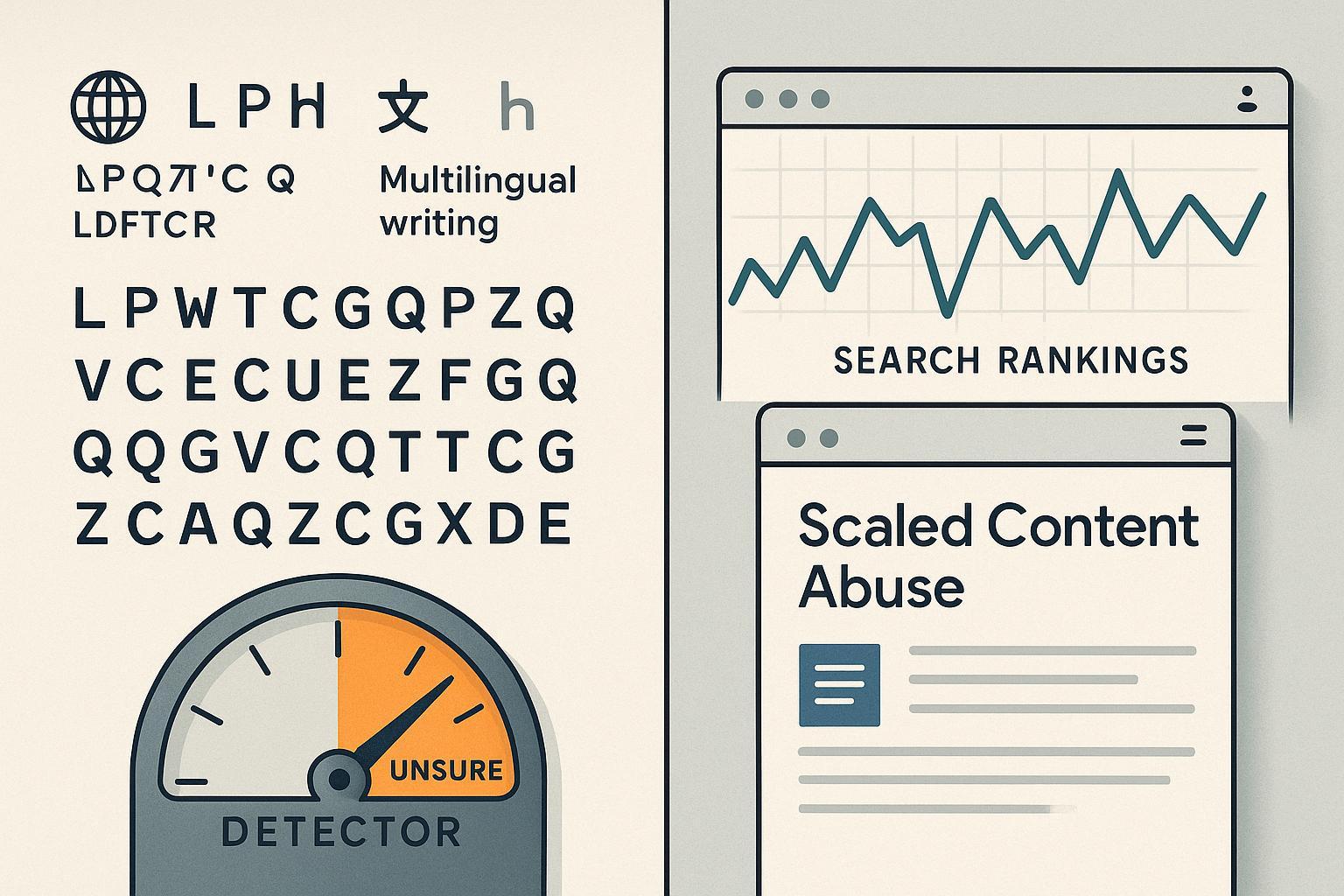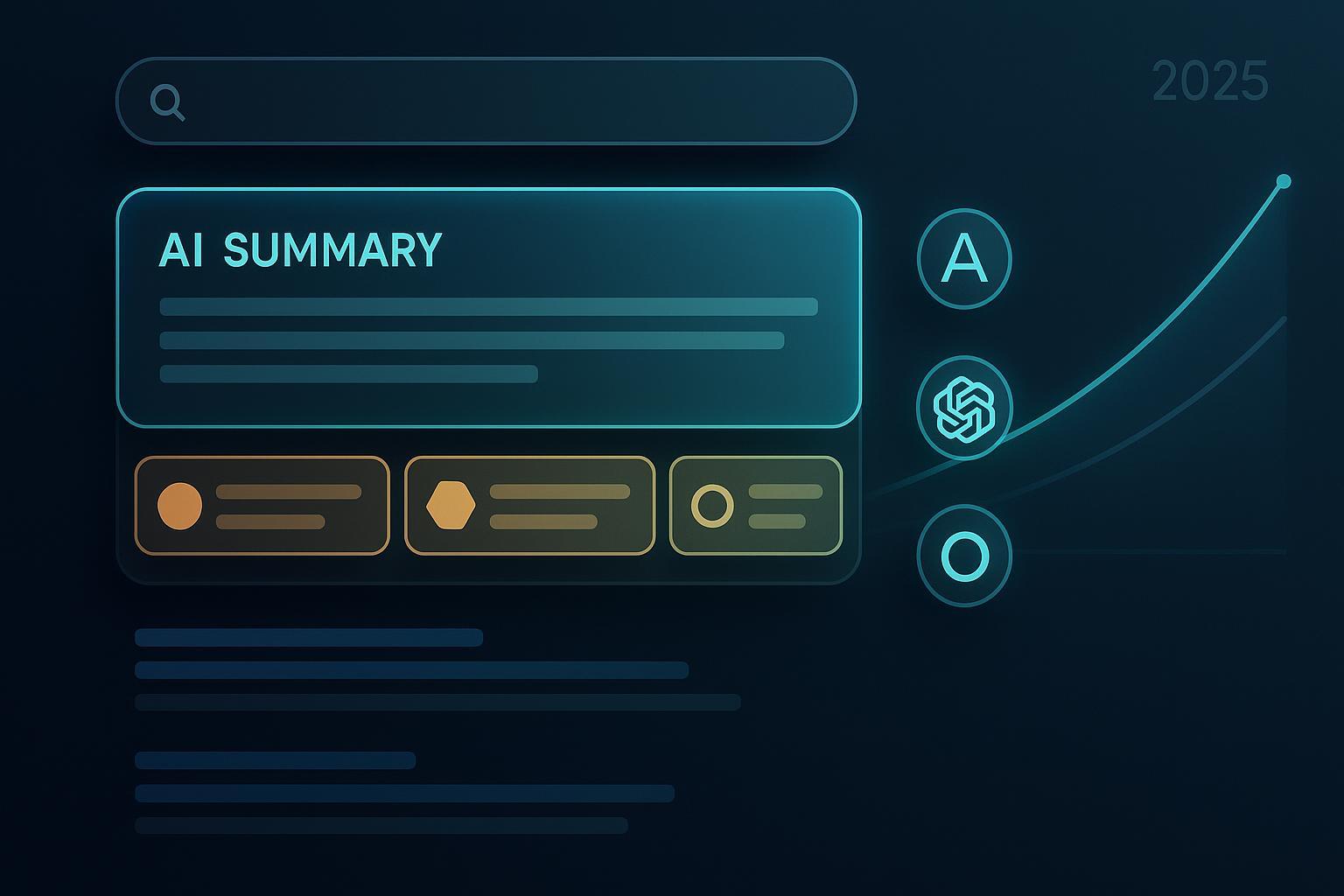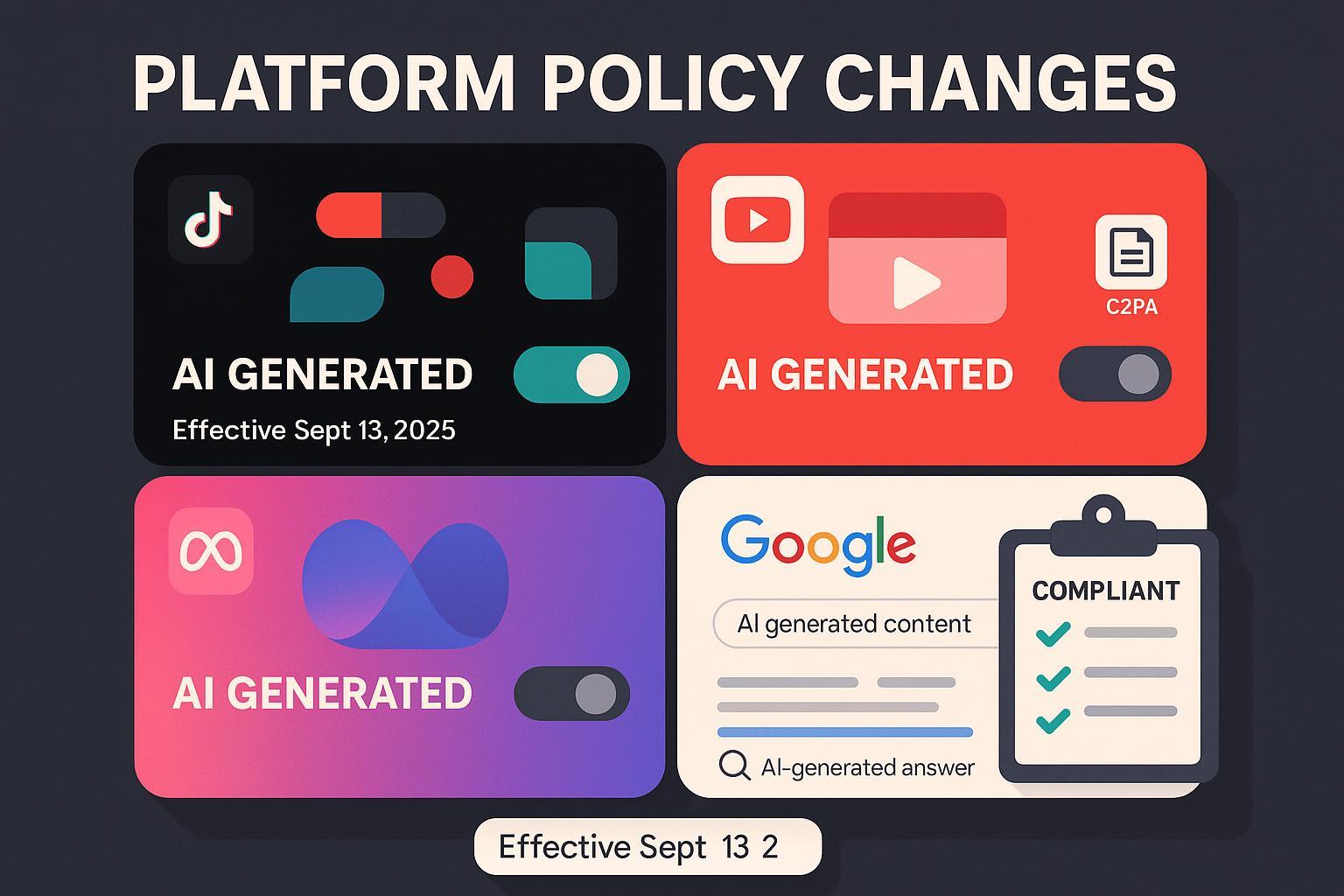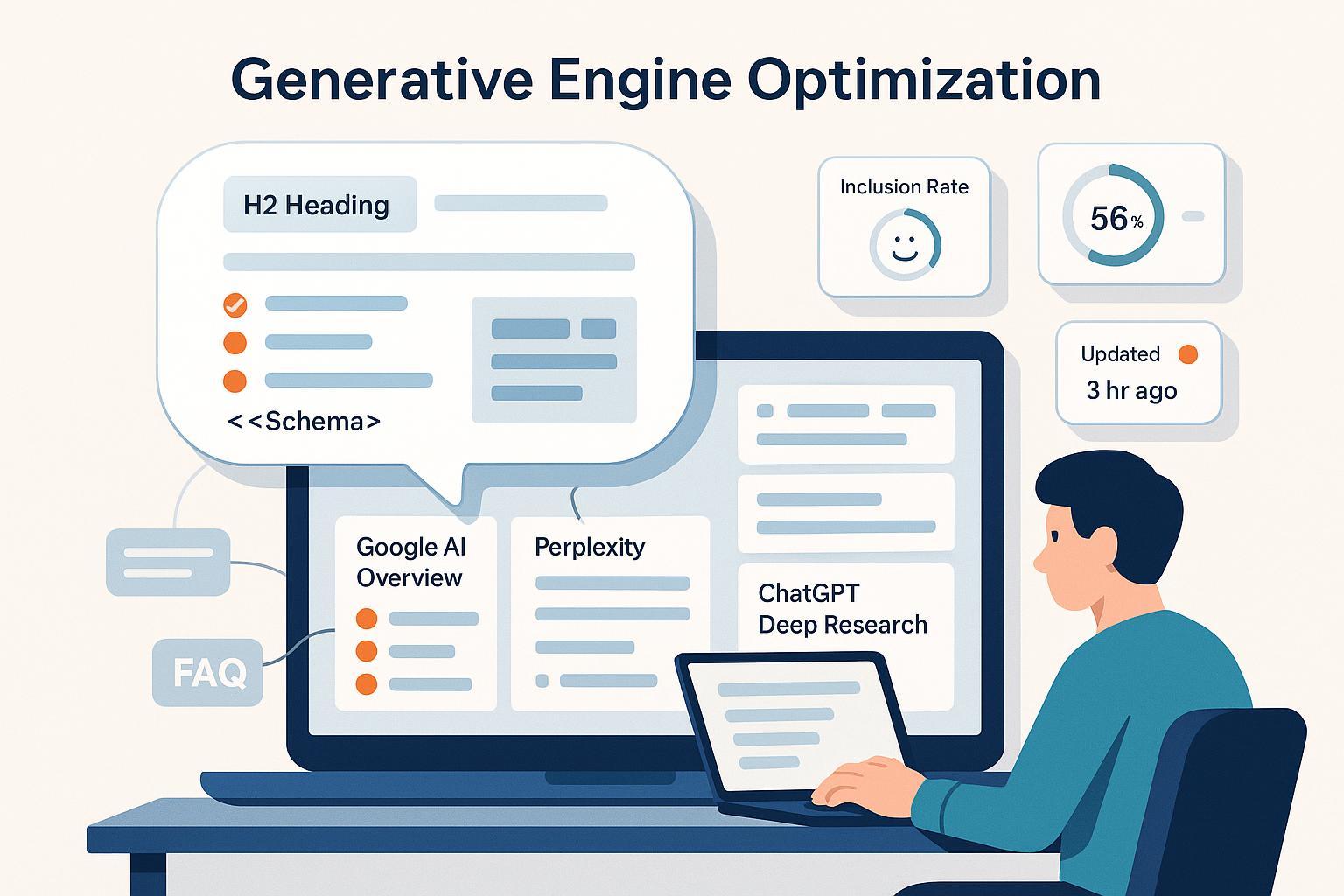Why Traditional SEO Fails Against Generative Search Engines in 2025
Discover how Google AI Overviews, Bing Copilot & more are disrupting SEO in 2025. Get data-backed strategies to boost your AI search visibility now.


Updated on October 12, 2025
Generative search has turned the results page into an answer surface. Instead of ten blue links, users increasingly see synthesized responses sourced from multiple sites. That shift is depressing clicks on many informational queries and exposing a core weakness in the classic “rank-to-click” SEO playbook.
This analysis explains what changed, why ranking alone no longer guarantees inclusion, and how to measure and adapt your strategy across Google AI Overviews, Bing Copilot, Perplexity, and chat-style search.
1) What changed in the results page
- Prevalence rose in 2025. Semrush’s U.S. panel shows Google’s AI Overviews appearing on roughly 6.49% of queries in January and 13.14% by March 2025, with a strong skew toward informational intents, as documented in the Semrush AI Overviews study. See the methodology and time series in the 2025 analysis: Semrush AI Overviews prevalence (Jan→Mar 2025).
- Google expanded globally. In May 2025, Google said AI Overviews were live in 200+ countries/territories and 40+ languages, adding that queries showing Overviews drive “over 10% increase in usage” in its largest markets. Details are in the Google blog: AI Overviews expansion (2025). Treat this as a platform-claimed usage metric rather than independent traffic validation.
- Users click less when summaries appear. In a March 2025 behavioral panel, Pew Research Center found that only 8% of Google visits with an AI summary resulted in a link click versus 15% when no summary appeared; 26% of summary visits ended the session vs. 16% without summaries. See methodology and caveats in the Pew Research Center click-behavior analysis (2025). Google has publicly questioned aspects of Pew’s method, so interpret these as directional.
Net effect: More answer-first SERPs plus lower click propensity on informational queries mean fewer visits for pages that once thrived on listicles and “what is” explainers.
2) Why ranking ≠ inclusion in 2025
Generative engines synthesize answers from multiple sources, then expose a short list of citations. Traditional ranking signals still matter, but inclusion now hinges on different factors:
- Extractability and clarity. Models favor content blocks that neatly answer the question—definitions, steps, data points, and caveats that are easy to quote and attribute.
- Freshness and provenance. Timestamps, revision notes, and cited references increase trust. Google’s developer guidance stresses helpful, well-sourced content; thin or ambiguous pieces are deprioritized in summaries even if they rank.
- Topic authority and safety. For sensitive YMYL topics, strong author bios, references, and review processes improve inclusion odds.
- Intent reshuffle. Overviews trigger most on informational queries—the exact category legacy SEO harvested. That’s where the click share is eroding, not on navigational or branded demand.
Independent data supports this split. In an April 2025 panel of 700k keywords across five industries, Amsive reported that only 4.79% of branded keywords triggered AI Overviews—and when they did, CTR rose by 18.68%. By contrast, non‑branded queries saw an average −19.98% CTR change, and keywords outside the top three positions suffered a −27.04% delta. See the study details in Amsive’s 2025 CTR impact analysis.
The takeaway: The game is no longer rank-to-click. It’s rank-to-be-cited.
3) The KPI blueprint for generative engines
To manage what you can’t measure is to gamble. Build a KPI set that reflects the new distribution channel—AI-generated answers across multiple engines:
- Presence: Are you cited inside Google AI Overviews, Bing Copilot, Perplexity, and chat search on priority topics? Track by query cluster and market.
- Citation share: When an answer lists 5–10 sources, what percentage are yours versus competitors? Trend it over time.
- Sentiment: Is your brand framed positively, neutrally, or negatively inside the synthesized response?
- Freshness/recrawl: How often do engines re-pull your pages? Track last-seen timestamps from your logs and spot gaps.
- Outcome linkage: Tie presence and citation share to downstream KPIs—brand queries, assisted conversions, and lead velocity—even as raw clicks decline.
Note on traffic context: While classic organic search still dwarfs AI platforms in overall traffic share, the direction of travel is clear. SE Ranking’s 2025 research estimates AI platforms (ChatGPT, Perplexity, others) at roughly 0.15% of global internet traffic, up from 0.01% in the U.S. a year prior, with organic search still near ~48.5%. See scope and method in the SE Ranking AI traffic research (2025). The implication: treat AI answer inclusion as a leading indicator of future demand and brand strength, not just immediate clicks.
4) Practical workflow: auditing AI citations (multi-engine)
Use a weekly cadence for your top 50–100 queries per product line. The goal is to document inclusion, citations, and sentiment—then close gaps fast.
- Define priority intents. Cluster queries by problem, product, and stage. Include non‑brand informational and brand navigational.
- Capture the evidence. For each engine (Google AI Overviews, Bing Copilot, Perplexity, and chat search), run the queries, take timestamped screenshots, and log which URLs are cited and how.
- Classify sentiment and framing. Is your guidance quoted as the definition, a step in the method, or a caveat? Note tone and accuracy.
- Diagnose extractability. Where you’re absent, check if your page clearly answers the question in a concise, cite-friendly block with references and a last‑updated stamp.
- Ship fixes. Add Q/A sections, definitions, steps, and sources. Tighten titles, intros, and schema. Re‑fetch and re‑check after publish.
Example toolchain: For teams that prefer an off‑the‑shelf dashboard, Geneo can be used to track cross‑engine brand mentions, citations, and sentiment in AI answers and maintain a historical log for your queries. Disclosure: Geneo is our product.
For deeper guidance on consolidating observations and alerts, see how to centralize AI answer visibility and sentiment monitoring.
5) Engineer content for extractability (rank‑to‑be‑cited)
Shift from monolithic posts to answer‑ready blocks that models can quote directly:
- Definition block: 1–2 crisp sentences that cleanly define the concept; include a source or internal methodology link if relevant.
- Steps/Checklist: Numbered, unambiguous instructions for “how to” intents.
- Data callouts: Short, scannable stats with year and publisher in the prose; link the precise claim to the canonical source.
- Caveats/risks: One paragraph on scope limits, compliance, or variance by vertical.
- Provenance: “Last updated” stamps; author credentials; references list.
- Schema alignment: Add FAQPage or HowTo where appropriate using JSON‑LD, ensuring the marked‑up content is visible on-page and accurate. Validate regularly.
Engine nuances to respect:
- Google AI Overviews: Citations often appear as footnoted sources at the end of the answer. Freshness, clarity, and trust signals matter, as suggested by Google’s 2025 developer guidance.
- Bing Copilot Search: Microsoft emphasizes visible citations and inline sourcing. The April 2025 announcement explains that users can “see a list of every link used” and that sentences are linked inline; see Microsoft’s Introducing Copilot Search (2025).
- Perplexity: Answers include clickable citations, with Research mode supporting deeper, multi‑source reports; see the Perplexity Hub note on Research mode (2025).
6) Portfolio strategy: protect brand demand, rebalance the mix
- Fortify branded search. Branded and navigational queries retain stronger click‑through in AIO pages, per the Amsive panel noted above. Double down on brand storytelling, community, and partnerships to grow direct demand.
- Invest in GEO alongside SEO. Treat generative engine optimization (GEO) as a distinct layer: engineer extractable answers, instrument AI visibility KPIs, and update monthly.
- Pair with paid. Where AI answers push organic below the fold, test paid units to maintain above‑the‑fold presence on high‑value intents.
- Expand owned and community channels. Reduce dependency on any single referrer by building newsletter, events, and partner co‑marketing motions.
If you need examples to emulate, study cross‑industry best practices for AI‑driven visibility, then adapt patterns to your vertical and governance constraints.
7) Putting it all together: a 30‑day plan
- Week 1: Lock your query clusters; baseline inclusion and citations across engines; capture screenshots and logs; set your “Updated on” cadence.
- Week 2: Ship extractability fixes on the worst gaps (definitions, steps, data callouts, citations, schema). Prioritize pages with near‑miss citations.
- Week 3: Roll out dashboards for presence, citation share, sentiment, and freshness. Align stakeholders on the KPI blueprint.
- Week 4: Re‑audit, compare deltas, and expand to the next 50–100 queries. Launch a branded demand initiative to hedge informational click loss.
Conclusion: SEO didn’t die—it split
Generative search didn’t kill SEO; it split it. Classic SEO still matters for navigational/transactional queries, but for informational demand the distribution channel is now the answer box. Your job is to be the source that gets cited.
Next steps: Stand up the KPI blueprint, run a weekly audit loop, and re‑engineer content for extractability. If you want an out‑of‑the‑box way to monitor cross‑engine citations and sentiment with historical context, you can explore Geneo as part of your workflow.
—
Reference notes and context
- Prevalence and intent mix: Semrush AI Overviews prevalence (Jan→Mar 2025)
- Platform expansion and usage claim: Google blog: AI Overviews expansion (2025)
- User click behavior change: Pew Research Center click-behavior analysis (2025)
- CTR shifts by query type: Amsive’s 2025 CTR impact analysis
- AI traffic context: SE Ranking AI traffic research (2025)
- Copilot citations UI: Microsoft’s Introducing Copilot Search (2025)





